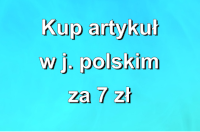Comparison of the effectiveness of physical treatments with central stabilization training in the treatment of patients with lower back pain syndrome
Paweł Gąsior
P. Gąsior – Comparison of the effectiveness of physical treatments with central stabilization training in the treatment of patients with lower back pain syndrome. Fizjoterapia Polska 2019; 19(4); 80-91
Abstract
Introduction. Spinal pain syndromes have become a social problem. Among the many factors causing pain, the most frequently mentioned are: congenital anomalies, degenerative changes, inflammations, neoplastic diseases, injuries, overload pains, metabolic disorders, psychological problems, social problems. In the treatment of back pain, kinesitherapy, physiotherapy and pharmacological treatment are most commonly used.
Purpose of research. Comparison of the effectiveness of physical treatments with central stabilization training in the treatment of patients with low back pain syndrome.
Material and methods. The study was performed on a group of 40 patients (22 women and 18 men) with diagnosed lower back pain syndrome. The subjects were assigned to two groups. Group A has undergone a series of treatments in the field of physical therapy. Group B performed central stabilization training without using physical therapy. Before the beginning of the treatments and after the end of rehabilitation, the degree of pain and their impact on everyday life comfort were assessed using the Oswestry questionnaire (ODI) and the VAS scale.
Results of the research. There was no significant difference in the results regarding the subjective assessment of pain in the lower spine, verified with the VAS scale. In both groups a highly significant (p <0.01) drop in pain sensations after therapies in relation to the results from the pre-therapy period was observed. There was no significant difference in the results of daily living comfort verified by the ODI questionnaire depending on the research group (p <0.05). Highly significant (p <0.01) difference concerns the comparison of results before and after therapy in two groups. None of the applied therapies shows greater effectiveness in improving the comfort of everyday life, despite the fact that both therapies in the assessment of patients improve this comfort.
Conclusions. Central stabilization exercises are an effective alternative to widely used physiotherapeutic procedures in the treatment of lower back pain syndrome or should be effectively complemented. Our own studies did not show unambiguously higher effectiveness of physical treatments in relation to the concept of central stabilization exercises.
Key words:
core stabilization, pain, lumbar section, physical therapy
| Pobierz/Download/下載/Cкачиваете | Besplatno preuzmi članak na engleskom jeziku |



